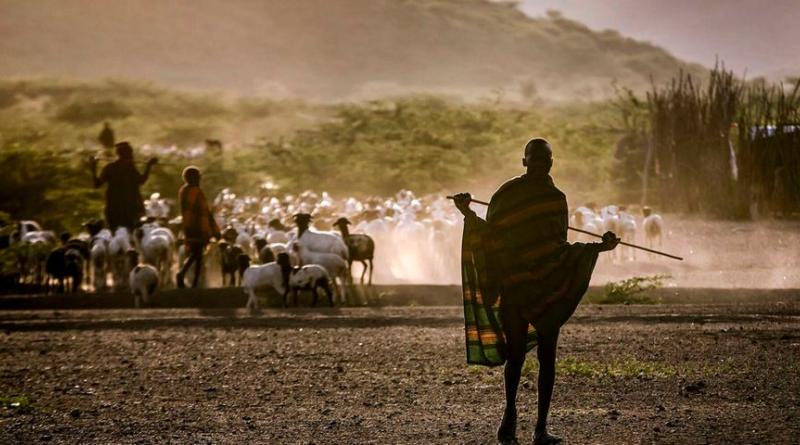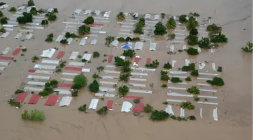Climate change fuels violent conflict in Kenya, says WFP report

A new report by World Food Programme (WFP) says climate change has contributed to violent conflict in multiple settings across Kenya and this is expected to continue as the impacts of climate change worsen.
The report titled ‘Climate Security Study in Kenya’ says conflict is a major driver of instability in the Kenyan food system.
“Kenya is increasingly affected by farmer-herder conflict, as climate change disrupts forage and water resources, depleting pastures and leading herders to move their livestock over vast distances, occasioning conflict with local communities,” said the report.
The report was authored by Emma Whitaker while co-authors are Lucas Destrijcker, Johanna Caitlin Dieffenbacher and Hannah Elisabeth Kurnoth.
Inter-group conflict
The 65-page report states that other instances of conflict affecting the food system range from banditry and cattle rustling to inter-group conflict, terrorism and political aggravation.
“These increase food insecurities by causing displacement and impoverishment, as well as restricting livelihoods.”
Read: Tension as herders forcefully invade Meru village
The North Rift region is in a state of turmoil and hundreds of thousands of residents have seen their livestock — a major source of livelihood — wiped out by armed criminals.
At least 200 people, among them security personnel, have been killed by bandits and thousands displaced in the past year alone.
During the last six months, 100 civilians and 16 police officers have been killed—an average of one person every two days in what is becoming Kenya’s biggest internal security problem.
The report further states that in the past 10 years, Kenya has seen numerous security incidents, with the highest concentration of violence also taking place in the most populous areas of the county including the central region, Nairobi and the coastal areas.
Instability
However, some of the most densely populated regions such as the Nyanza and Western Provinces have seen relatively few occurrences of violent clashes.
“Conflict is a major driver of instability in the Kenyan food system. Kenya is increasingly affected by farmer-herder conflict, as climate change disrupts forage and water resources, depleting pastures and leading herders to move their livestock over vast distances, occasioning conflict with local communities.”
Other instances of conflict include terrorism and political aggravation which increases food insecurities by causing displacement and impoverishment, as well as restricting livelihoods.
While conflicts relating to livestock raiding are not a new phenomenon in many pastoral societies, in recent years, raiding has become more frequent, more violent and more destructive.
“The regions most affected by climate change are also the most susceptible to violent conflict because of an over-dependence on rain-reliant economic activities, the high demand for already scarce arable land, and limited ability to adapt to climate impacts,” said the report.
Read: Residents go hungry as human-wildlife conflict escalates in Taita Taveta
The report observes that communal groups in Turkana, Pokot and Samburu, traditionally compete for access to water and land, which are essential in a livestock-rearing economy.
As pastoralist violence is closely linked to erratic local weather conditions, prolonged droughts have forced herders to relocate into areas inhabited by other farming or herding communities, thus provoking conflicts as different groups simultaneously access the same resources.
The threat of terrorism also impacts food security. The presence of a large number of Somali migrants poses a pressing political and social challenge.
The reports warn that unless response measures such as detentions and deportations are handled with increased sensitivity, there is likely to be further backlash.
Human-wildlife conflict
The report says mass detentions of Somalis threaten to create a greater constituency for al-Shabaab, uniting grievances that are specific to the Somali community with those of the wider Muslim population.
The increasing scarcity of resources has also led to human-wildlife conflict where herds of elephants destroyed 100 hectares of maize.
“Incidents are also increasing around wildlife protected areas such as the Amboseli National Park, where elephants invade farms and destroy crops, and compete with livestock for pasture,” adds the report.
Other instances of human-wildlife conflict include the proliferation of invasive plant species such as Prosopis juliflora and Acacia reficiens, which restrict access to quality pasture, as well as the infestation of tsetse fly in Garissa and Isiolo counties.
The report suggests key actions to help lower the risk of violent conflict by improving land use and supporting food security including beekeeping, as well as access to education, to support alternative and complementary livelihoods to supplement pastoral livelihoods.
Other measures include investing in locally appropriate, nutritious and climate-resilient value chains, including non and off-farm components and expanding support for post-harvest management capacity.
“This could be supported through the provision of equipment such as solar dryers, cold storage or hermetic bags, as well as food safety and quality training,” concludes the report.
fmureithi@ke.nationmedia.com
cover photo:Herders drive their livestock home in Morungole, Turkana County, on October 3, 2019.





